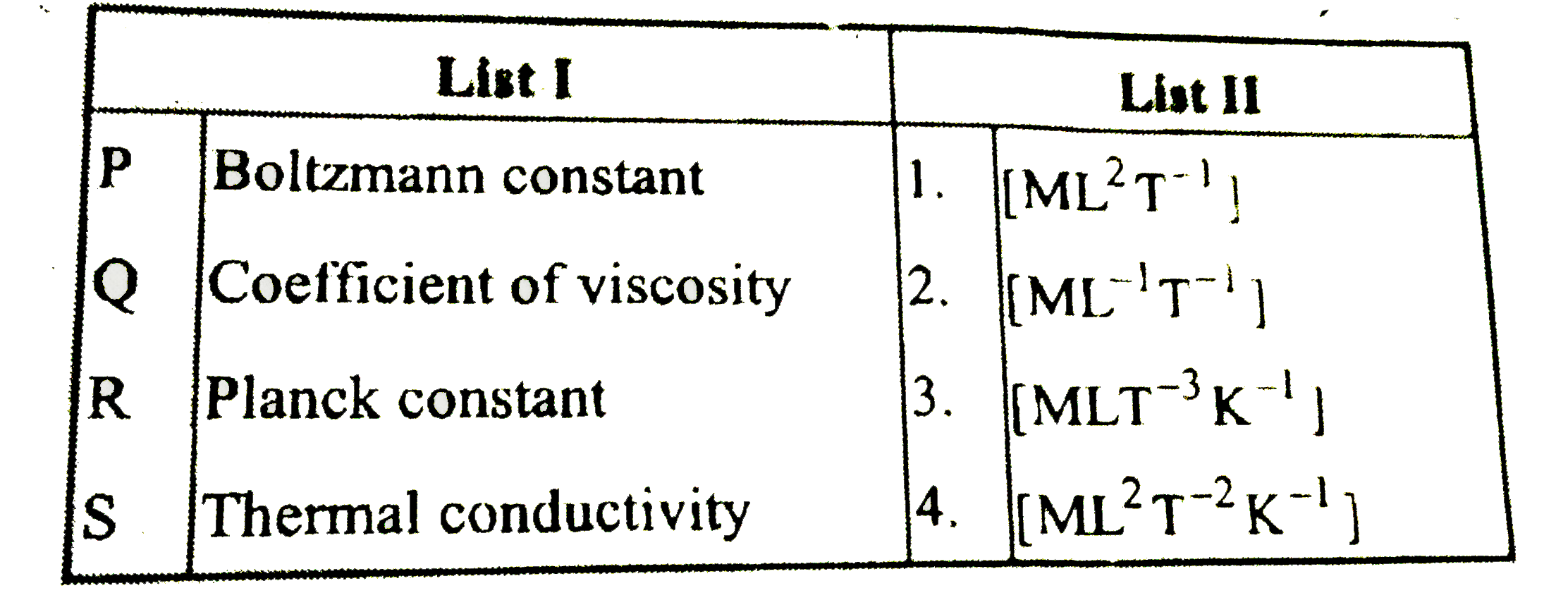In the ideal double-slit experiment, when a glass-plate(refractive index 2) of thickness t is introduced in the path of one of the interfering beams (wave-length λ), the intensity at the position where the central maximum occurred previously remains unchanged. The minimum thickness of the glass-plate isSolution in Gujrati
2λ
2λ3
λ3
λ
The correct Answer is:A
As path difference due to slab =(μ−1)t
⇒(μ−1)t=nλ
for munimum thickness t of plate, n should be minimum i.e. n=1∴(μ−1)t=λ
⇒t=λμ−1⇒t=λ1.5−1⇒t=2λ
Topper's Solved these Questions
- WAVE OPTICSBOOK - ALLEN CHAPTER - WAVE OPTICSEXERCISE - Exercise 2 (Previous Year Questions)
7 Videos
- WAVE OPTICSBOOK - ALLEN CHAPTER - WAVE OPTICSEXERCISE - Exercise 5 A (Previous Years Questions)
17 Videos
- UNIT & DIMENSIONS, BASIC MATHS AND VECTOR BOOK - ALLEN CHAPTER - UNIT & DIMENSIONS, BASIC MATHS AND VECTOR EXERCISE - Exercise (J-A)
7 Videos
Similar Questions
Electromagnetic waves are transverse is nature is evident by
View SolutionTo demonstrate the phenomenon of interference, we require two sources which emit radiation ......
View SolutionMatch List I with List II and select the correct answer using the codes given below the lists :

View SolutionIn the ideal double-slit experiment, when a glass-plate(refractive index 1.5) of thickness t is introduced in the path of one of the interfering beams (wave-length lamda ), the intensity at the position where the central maximum occurred previously remains unchanged. The minimum thickness of the glass-plate is
View SolutionIn YDSE, when a glass plate of refractive index 1.5 and thickness t is placed in the path of one of the intefering beams (wavelength lambda ), intensity at the position where central maximum occurred previously remains unchanged. The minimum thickness of the glass plate is
View SolutionIn the ideal double-slit experiment, when a glass-plate (refractive index 1.5) of thickness t is introduced in the path of one of the interfering beams (wavelength lambda ), the intensity at the position where the central maximum occurred previously remains unchanged. The minimum thickness of the glass-plate is
View SolutionIn YDSE, when a glass plate of refractive 1.5 of thickness t is placed in the path of one of the interfering beams of wavelength λ, intensity at the position where central maximum occurred previously remain unchanged. If the minimum thicknes of the glass plate is kλ. Find the value of k........
View Solutionआदर्श द्वि- स्लिट प्रयोग में जब व्यतिकारी किरणों (तरंगदैर्ध्य λ) में से एक के मार्ग में t मोटाई की काँच की प्लेट (अपवर्तनांक 1.5 ) रखी जाती है तो जहाँ पहले केन्दीय उच्चिष्ठ बनता था उस स्थान पर तीव्रता अपरिवर्तित रहती है। तब काँच की प्लेट की न्यूनतम मोटाई है:
View SolutionIn an ideal double slit experiment when a glass plate having refractive index 1.5 and thickness t is placed in the path of interfered light rays of wavelength λ then the intensity remains unchanged at the place where the central maximum was previously formed. Then the minimum thickness of the glass plate is
View SolutionIn double slit experiment, when a glass plate of μ=1.5 ans thickness t is introduced in path of one of the interfering beams of wavelengths λ, the intensity at position of central maxima remains unchanged. Minimum thickness of glass plate is :
View SolutionIn Young's double slit experimentt. When a glass plate (mu = 1.5) of thickness is introduce path of one of the interfering beams (wavelength = lambda ) the intensity at the position where centre maxima occurred previous remains unchanged. The minimum thickness
View SolutionIn the Young's experiment, when a plate of thickness lambda and refractive index of 1.5 is introduced in path of beam the intensity at the position where central maximum occurred previously remained unchanged. The minimum thickness of glass plate is ...... I
View SolutionIn the ideal double-slit experiment, when a glass-plate (refractive index 1.5) of thickness t is introduced in the path of onc of the interfering beams (wavelength lamda ), the intensity at the position where the central maximum occurred previously remains unchanged. Find the minimum thickness of the glass-plate.
View SolutionIn the ideal double-slit experiment, when a glass-plate (refractive index 1.5) of thickness t is introduced in the path of one of the interfering beams (wavelength λ), the intensity at the position where the central maximum occurred previously remains unchanged. The minimum thickness of the glass-plate is
View SolutionIn the ideal double-slit experiment, when a glass-plate (refractive index 1.5) of thickness t is introduced in the path of one of the interfering beams (wavelength lambda ), the intensity at the position where the central maximum occurred previously remains unchanged. The minimum thickness of the glass-plate is
View SolutionIn ideal double-slit experiment, a glass plate (refractive index = 1.5) of thickness t is introduced in the path of one of the interfering beams (wavelength λ), intensity at the position where the central maximum occurred previously remains unchanged. The minimum thickness of the glass plate is
View Solution
